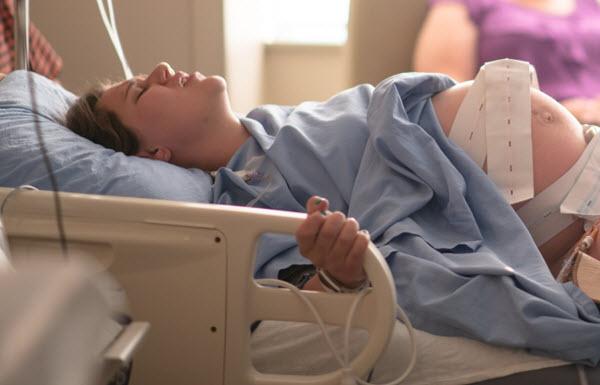Maternal mortality is a topic that is finally getting some much-needed attention in the headlines, but do we really understand what it’s all about? To do some level-setting, but without getting too much into the weeds, maternal mortality basically means death of a mother, during or shortly after pregnancy (within 42 days), for a reason related to pregnancy.
Maternal mortality rates (MMR) are reported in deaths per 100,000 live births. So, would it surprise you to hear that in 2020 the MMR in the U.S. was over three times that of most other “high-income” countries?
We’re failing our mothers right here in the U.S., where we have access to evidence-based research and advanced medical care. Not only is this rate high, but it’s getting higher, even with an increased focus on this issue.
Understanding the Numbers
The World Health Organization reports data for maternal mortality on a global level, pointing out that in 2020, a mother died every two minutes. They highlight that there is a clear disparity between low-income and high-income countries.
In 2020 the MMR for low-income countries was 430, vs 12 in high-income countries. Some of the contributing factors include access to care, access to trained professionals, adequate equipment and supplies, social determinants of health (income, education, transportation, etc.), gender inequalities, and crises in the local environment.
The CDC just released its most recent report on maternal mortality in the United States,
including 2021 data.

- In 2021 1,205 women died from “maternal causes”, which is an increase from 861 in 2020.
- Looking at that in terms of the maternal mortality rate, that’s 32.9 deaths per 100,000 live births, while the rate in 2020 was 23.8.
- When drilling further down into the rates, it’s also important to note which populations are most impacted. For example, the maternal mortality rate for non-Hispanic black women was 69.9 in 2021, which is 2.6 times that of non-Hispanic white mothers.
- Also of importance is noting that the rate goes up as maternal age increases.
Using data to determine differences in rates in sub-populations should be the first step in
developing comprehensive strategies to address mothers, wherever they are in the healthcare landscape.
What Do We Do About It?
So what do we do about it? This issue is complex and requires a multi-faceted approach to
improve maternal mortality. The American Congress of Obstetricians and Gynecologists
(ACOG), an authority on all things maternity, outlines some of their strategies to address
maternal mortality:
- Strategic alliances and partnerships
- Improved and enhanced postpartum care
- Cultural changes
- Structured levels of maternal care
- Raising awareness surrounding maternal mortality
Pulling from those strategies, one component that has become somewhat of a hot topic is
postpartum care. Postpartum care is a crucial component of addressing maternal mortality,
which has sparked conversations and initiated movement in the policy space, as well as the
healthcare world.
ACOG outlines improved postpartum strategies such as:
- Shifting to an ongoing model of postpartum care rather than one appointment
- 2 visit model: 1 by 3 weeks postpartum and another within 12 weeks postpartum, with other visits, as needed, tailored to a woman’s needs
- Whole-person care focusing on physical, social, and psychological needs
- Ongoing counseling and support for chronic conditions and risks
- Policy changes to support ongoing postpartum care
One point that some people don’t realize is that maternal mortality doesn’t stop when a woman gives birth, and many maternal deaths occur in this postpartum period.
Data from the Commonwealth Fund presents a breakdown of when deaths occur:
- 52% occur after delivery of which 19% of those being in the 6 days post delivery
- 21% between one and 6 weeks
- 12% during the year following birth
Statistics like these highlight the importance of improving postpartum care, to decrease maternal deaths.
Various medical associations and policy organizations support the expansion of Medicaid
postpartum coverage, in order to provide better support in the postpartum period to mothers utilizing Medicaid. Medicaid generally serves large numbers of pregnant mothers and children. Several states have already expanded their Medicaid postpartum coverage, and this continues to be a topic in the medical and political arenas.
A Mother’s Mental Health
Physical health is extremely important in the postpartum period, but mental health is huge
component of overall maternal, infant, and family well-being that is often neglected.
The birth of a baby brings its own plethora of life adjustments to navigate, whether its the first or not, making this period of life stressful on its own. Medically speaking, the rapidly shifting hormones and changes to the body put women at risk for mental health challenges.
Postpartum depression (PPD) is not a new diagnosis, but we are learning more and more about this topic now. CDC data suggests that 1 in 8 women who have recently given birth suffer from PPD.
Those rates are higher in Black and Hispanic mothers. Yet many women don’t recognize the symptoms or do not seek treatment for various reasons, including stigma, or social determinants of health that impact the way they interact with the healthcare ecosystem.

Most OBGYN’s, and even pediatricians, screen mothers for PPD at appointments, but the
disconnect can happen when mothers screen positive for depression. The provider may instruct moms to follow-up with a mental health provider, but some women don’t know where to go, and not all mental health providers are comfortable with treatment of PPD.
So, it leaves mothers falling into the gap where coordination of care should be taking place.
The Other Part of the Story
And let’s not forget the other part of the PPD story — men.
According to a pilot, cited by the CDC, 1 in 10 fathers participating in the project experienced symptoms of depression since their baby was born. In order to address depression in the post-birth space, we must take a comprehensive approach, including the entire family and support system in order to make a real difference.
So what do we do, because maternal mortality rates are higher, not lower, even though we’re talking about it more? We have to take a collaborative approach. That means hospitals, private practices, insurers, researchers, advocates, policy makers, and stakeholders of all kinds are going to have to work together to address this issue.
Some of the highlights from resources listed above, and some not discussed, hit some of the high points below:
- Get better data, to understand the problem: The “Data Mapping to Save Moms’ Lives Act”, and other data driven initiatives to collect, compile, and understand the issues, could help us make more informed choices.
- Break down maternal mortality data by race, ethnicity, socioeconomic status, geographic
location, education level, and other risk factors, in order to understand where differences are, and develop strategies to specifically address challenges experienced by identified populations. - Better and more comprehensive postpartum care is a must.
- Addressing mental health concerns for mothers, and the family, has to start with depression screening and result in action-connecting patients to the right resources to meet their needs. Not just saying “follow-up with a mental health provider” when mothers screen positive for postpartum depression.
- Develop innovative and out-of-the-box solutions. Clearly the way we are providing care isn’t working, so we need to think in new and innovative ways.
- Maternity care, must be provided by an interdisciplinary care team.
- Work with non-traditional providers-bringing in providers like midwives and doulas, who have wonderful outcomes, especially for certain populations. Consider models such as Nurse-Family Partnership of home visiting models to support mothers where they’re at.
- Connect women with the right level of care, based on their risks and needs.
Conclusion
The fact that so many women are still dying during pregnancy, childbirth, and in the postpartum period is unacceptable and honestly appalling in this time of such advanced medical care. It’s difficult to pinpoint or describe all of the issues that make this problem so hard to solve. The conversations are being had more and more, and it’s gaining more attention, which hopefully leads to more traction.
It must become a priority for all, in healthcare, out of healthcare, EVERYWHERE! Mothers give us life, and it’s time to start saving theirs!
Author Bio
Hatley Kilgore is a Registered Nurse with a Bachelor’s of Science in Nursing and is a designated Professional-Academy for Healthcare Management (PAHM) with 11 years of varied healthcare experience. Contrasting inpatient hospital and Emergency Department experiences gives her a unique perspective on acute care. Her varied writing experiences in Nursing Education and Quality Improvement grew her love for all types of writing from accreditation to provider education. Now she enjoys wielding writing as a tool to make people’s health and lives better through education and empowerment.
is a Registered Nurse with a Bachelor’s of Science in Nursing and is a designated Professional-Academy for Healthcare Management (PAHM) with 11 years of varied healthcare experience. Contrasting inpatient hospital and Emergency Department experiences gives her a unique perspective on acute care. Her varied writing experiences in Nursing Education and Quality Improvement grew her love for all types of writing from accreditation to provider education. Now she enjoys wielding writing as a tool to make people’s health and lives better through education and empowerment.




















